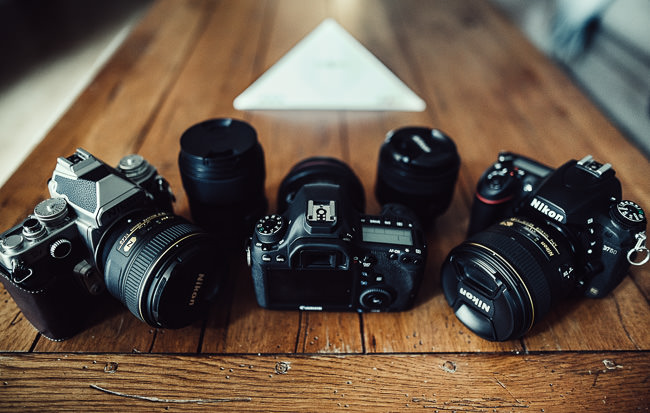
One of the most popular questions I receive from other photographers is, “Why are my images blurry?” Out of all the questions I get, this one is the most troubling, because 9 out of 10 times, it’s the same reason – missed focus. If you’ve tried all of the tips we provided on how to take sharp photos and your images are still coming out a blurry, you may need to calibrate your lenses. In this article, we’ll teach you how to calibrate your lenses in a few easy steps.
Why Are My Images Blurry?
Once I explain that the focus is off or missed, I ask if they have calibrated their lenses. Almost every time, the answer is surprisingly no. Not only have most not calibrated their lenses, but most simply don’t know how to do so. I’ve learned that most photographers assume that when they buy a lens, whether brand new or used, that the Auto Focus is going to be accurate when using it. What most don’t realize is that is rarely the case, resulting in what most consider to be “blurry” images.

How To Calibrate Your Lenses
Calibrating your lenses is actually very simple, and it is very important to help you get the most out of that expensive lens! I know that this is something a lot of you already do, and have your own method of doing it, but I know that there are a lot of you out there that have never calibrated your lenses and don’t know how. The bottom line is, lenses need to be calibrated to each camera so you can get sharp images and accurate focusing.
Simply assuming that your lenses and camera, or cameras, are accurate when autofocusing is a huge risk. I would bet that if you’ve never checked, chances are your lenses need to be adjusted.

I don’t have a single lens, whether Canon or Nikon, that didn’t need at least a slight adjustment. That’s right, each and every lens I own has been micro adjusted in-camera to have an accurate and pinpoint autofocus. Right out of the box, on each camera I own was either slightly front or back focusing. Some were off by a good amount and needed drastic adjusting.
Get a Calibrator
Most photographers simply don’t understand how the process works, or think that it’s a risky adjustment that they could screw up. The good new is, it’s a very simple process, and it is something that can be turned on or off. Nothing bad can happen, I promise! You don’t need to send your lens or camera into the local camera shop to be adjusted. You don’t need to buy a special calibrating software or even a fancy and expensive calibrating kit. None of these are needed to simply calibrate your lenses; you don’t even need a ton of time. All that’s needed is about 20 minutes and a $25 focus pyramid. Sure, there are other pricier options, or you could make one with a ruler, but the focus pyramid is what I use, and it gets the job done perfectly.

Set Up Your Camera and Calibrator On Stable Surfaces
To calibrate your lenses, set your camera up on a tripod, or flat surface like a table, and set the focus pyramid on a level surface about 6 feet away. I usually set it up at a distance that I typically shoot from, that way I know it’s accurate at the distance I shoot at the most. Either way, there is only one global setting, so once you make an adjustment and get it focusing on point, it “should” be good at any distance. The take home here is not to stress out about the distance from the pyramid.
focus using the viewfinder
Make sure that Live View is not on, and only focus using your viewfinder. Live View uses a different autofocus system, and any adjustments you make won’t be noticeable when using Live View. Keep it turned off through the entire process.
focus on the center line and adjust
While looking through the viewfinder, focus on the center line of the focus pyramid, shooting with the lens set at its widest aperture. Hit play and zoom in to see where the focus hits. It can be a little tough at first, but using the numbers above and below the center line, you should be able to see where it focused and where the sharpest lines are. Once you see whether it is front focusing or back focusing, you can go into your camera settings and make the necessary adjustments to make it accurate. The default it zero, so looking at the image above, I started with a +3. I then took another test shot, and it was still slightly off. I then made it +5, and it was accurately focusing on the center line like I wanted it to. So, keep taking test shots until you have the center line perfectly in focus. That’s it. Simple as that, no more blurry images.

Menu Settings For Nikon
For Nikon, it’s under the wrench or setup menu. It’s labeled as AF fine-tune and has a diagram showing you where you are moving the focus point. You want to only change the saved value, and make sure that the fine-tune is turned on. It will remember the changes each time you put that lens on, so you should only have to adjust it once.



Menu Settings For Canon
For Canon cameras, it’s very similar. You make the changes in the Function then Auto Focus settings, and the rest is the same as when done with to a Nikon body. Remember, though, if you have multiple cameras, you are making the adjustment in the camera, not the lens, so you need to calibrate each lens on each camera.

Summary
Here’s a quick summary on How To Calibrate Your Lenses:
- Get a Calibrator – There are many on the market but we recommend the $25 focus pyramid
- Set your camera on a Tripod – A tripod or other flat surface is essential. No hand holding.
- Focus using the viewfinder – Turn off live view and focus using the viewfinder.
- Focus on the center line and adjust – focus on the center lie and make adjustments in the menu.
ACCESS TO INDUSTRY-LEADING EDUCATION
Let us guide you in your photography journey with the best photography education and resources. Browse our complete, comprehensive solutions below and take the next step in your photography.
BROWSE WORKSHOPS






Get Connected!